
Play Russia
/ Главная / Russkiy Mir Foundation / Publications / Play RussiaPlay Russia
Anna Genova
The market of computer games is huge and extends back for a few decades. The Russian subject line in video games has not lost its popularity for many years. In this review, we will present the most impressive games by foreign studios, stories of which are somehow connected with Russia. There is the mysterious island of Syberia in the video game universe. It is inhabited with mammoths; Baba Yaga and Nightingale the Robber live on it; it is the place for adventures on the Trans-Siberian Railway during the October Revolution, tank battles of the World War II and much more.
Syberia is an adventure computer game that was created by a Belgian author and published by Microïds, a French company, in 2002. The game and its subsequent releases of 2004 and 2017 were highly praised by critics for its design, as well as inventive plot.

Despite the fact that the game is partly set in Russia, its actual name is Syberia, not Siberia (as it was released in Russia, as well as other CIS and Baltic countries). The truth is that Sokal had in mind the mythical island of Syberia, where mammoths live - it was the very island that attracted Hans the paleontologist, who was followed by Kate, a young lawyer from New York. Players will take part in their adventures.
“It is something more than a mediocre adventure,” critics commented on the game, and this is exactly the case. Benoit Sokal, a famous French game designer, artist and comic book artist, managed to visualize an intricate story, and also to create an exciting quest. Unconventional puzzles, movie-like camera angles and motion, the most detailed and realistic 3D character development are truly captivating, just as in a good movie.
This quest requires the player to move between locations, search for active points on the screen and solve tricky puzzles.
Fans of snow and Russia, presented in a peculiar manner, have again been targeted by the gaming industry. Crystal Dynamics, a video game developer from California, created Rise of the Tomb Raider, a rather attractive and user-friendly game in the action-adventure genre. The main character of the story is Lara Croft, a tomb raider, who is famous not only for games, but also for movies. Being accompanied by Jonah Maiava, an archaeologist and her friend, she goes to look for the mythical city of Kitezh, known as “Russian Atlantis”, but for some reason not to Nizhny Novgorod, but to the Ural Mountains.
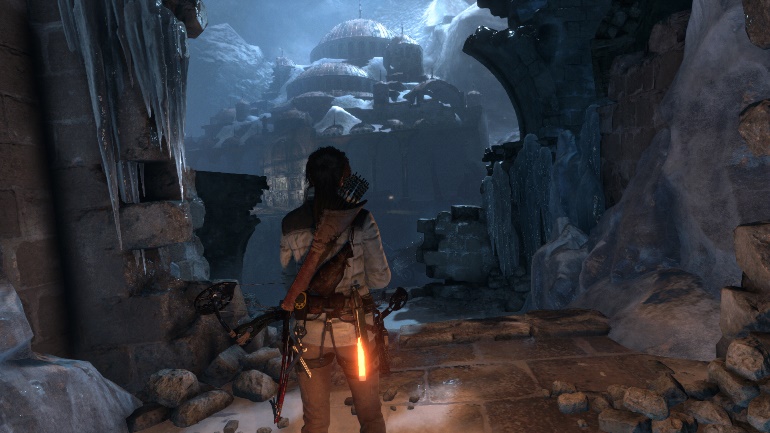
The goal, which Lara’s late father had been striving for, was to find the secret of eternal life and youth hidden in the miracle source. According to the developers, enigmatic Kitezh, where the source of immortality is, can be found right there, in the Urals, amid the abandoned Stalin's camps and mysterious ancient caves.
Lara and Jonah will face the mystical organization of Trinity and wild animals that wake up at different times of the day. In addition to those threats, Lara will have to struggle with inner conflicts and accept herself the way she is, that is, in her role as a tomb raider.
The game has a lot of snow, statues of Lenin and Soviet posters; Russian gamers who finished high school will have a lot of things to laugh at, finding errors in the inscriptions.
It takes approximately 30 hours to complete the game, including collecting all the relics, completing all the tests, and exploring all the tombs, dungeons, and caves. But after the player reaches the end, he will have many reasons to come back, thanks to additional game modes.
The popular game inspired several Hollywood films starring Angelina Jolie and Alicia Vikander.
Assassin’s Creed Chronicles: Russia
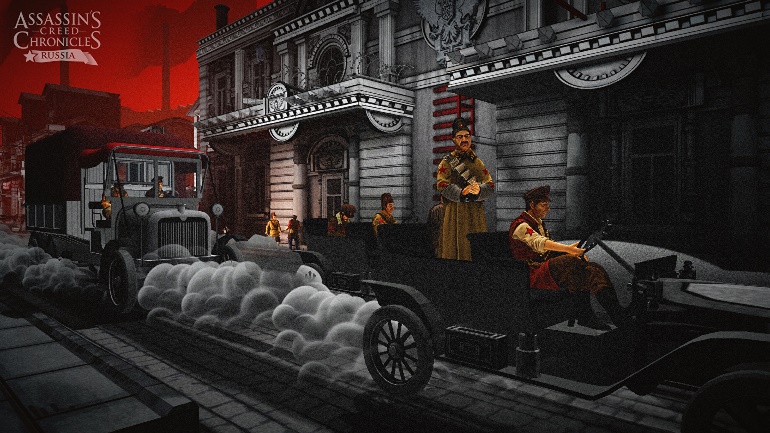
Assassin’s Creed, a cult game, is set in various epochs - here you can find the age of the Third Crusade, the French Revolution, and much more. However, the game can be considered historical only figuratively - there is a place for science fiction and crypto history in it.
The Russian part of Assassin’s Creed again takes place at the time of Revolution or, more precisely, immediately after it. The principal character of the game is Nikolai Orlov, a former assassin. After the October Revolution, he intends to leave Russia with his family, but first he must accomplish the last, very difficult task - to find a jewel-box once presented by Ezio Auditore, a video game character, to Shao Jun, a young Chinese woman, in 1521. The jewel-box is an artifact which the assassins and the Knights of the Temple fought over for centuries. Orlov tries to get into the palace captured by the Bolsheviks in order to steal it, but then he witnesses the massacre against the Tsar’s family, and he manages to save one of the Tsar’s daughters - Anastasia. Orlov cannot abandon Anastasia in the hour of need, so the game offers multitasking
While fighting and protecting their lives, Orlov can use a rifle in his missions, but Anastasia acts secretly relying on the Helix-blade in extreme situations.

Unlike many other games the famous World of Tanks strives to follow the historical story line of events as accurately as possible. The game was developed by Wargaming, a Belarusian company which is now known worldwide. It is dedicated in its entirety to armored vehicles of the mid-20th century. Fans of steel giants from all over the world fight for world tank domination in the World Wide Web.
Players are thrilled with the convenient aesthetic interface and abundance of modifications for military vehicles. There is a huge variety of options - 480 military vehicles from the USSR and the Communist bloc, as well as from the USA, China, Germany, France, Great Britain, Japan, and Sweden.
The company was founded by fans of strategic military computer games from Minsk back in 1998. The president of the company is Viktor Kisly, a graduate of the physical faculty of the Belarusian State University. The developers are fans of Russian military history and its reconstruction. While creating simulations, they presented events and circumstances of the Second World War in exquisite detail.
As to visual terms, there is nothing to complain about - the smallest design details of military equipment and architecture have been taken into account, even the ruins after the bombing have been drawn properly and clearly. Everything has been recreated based on films and photo documents from archives and museums with the help of experts in history of that period.
World of Tanks was followed by World of Warplanes, an aerial combat action game, and World of Warships, naval warfare-themed massively multiplayer online game. This whole military saga is united by the unique player space.
Today, World of Tanks is still one of the most popular shooters in the world. The game has repeatedly won prizes and even been presented as a new e-sports discipline.
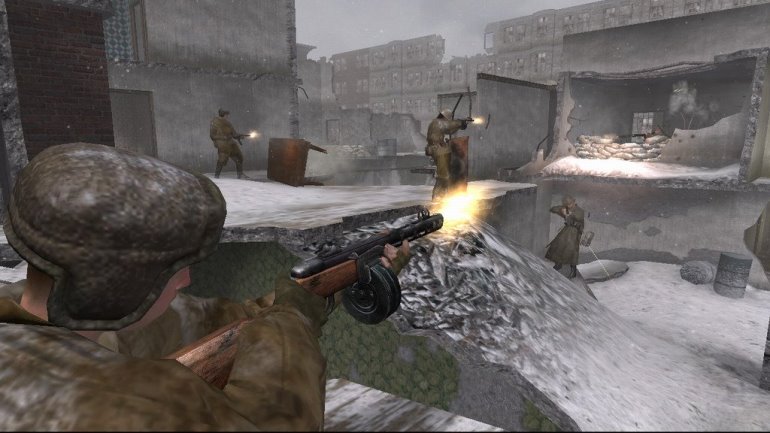
Call of Duty is another iconic game, which has repeatedly been the subject of tournaments with good prize pools. The American action game (developed by Infinity Ward) is also based on the history of the World War II. The game was first released in 2003; since then updates and new versions have been released almost every year. Call of Duty provides you with opportunity to play war on the side of Russians, Americans or British. The game offers a wide space for maneuvers - huge buildings, fields, cities and so on.
Call of Duty is still one of the most popular games in the world - it's a great shooter. The player has an option to experience “being embodied” as various characters, and mission executions have a look of scenes from action movies starring the player. The game mostly presents Russia as an action field, where the most furious fire fights can take place; and it's up to you to decide whether you want to fight in the computer World War II on the side of the Russians or their allies.
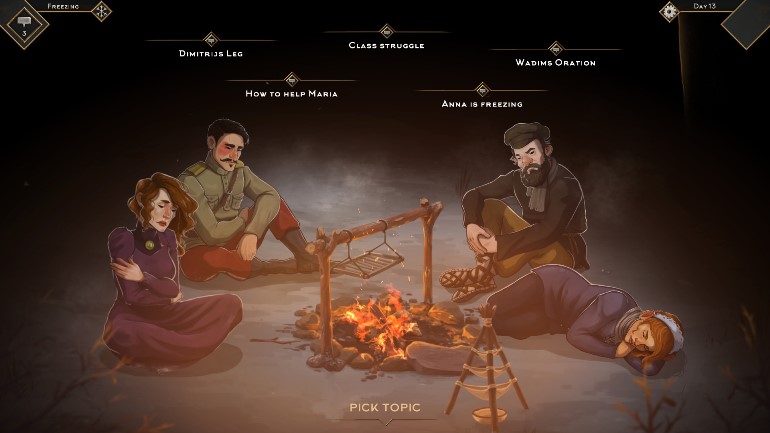
Help Will Come Tomorrow is a game to be released by Klabater, a Polish company, together with Archlight Creations studio in 2020.
Such rather abstract name conceals a simulation game of survival in Russia just before the October Revolution. The gamer will have to rescue passengers who survived the train crash on the Trans-Siberian Railway.
The main goal is to ensure that the characters live to see help. Nine characters that belong to three different social classes will be forced to interact, because cooperation is the key to survival. The gamer must prevent and resolve possible conflicts between characters so that no one is hurt. In addition, his/her task will be to provide for living, build temporary housing, get food, protect the characters from bad weather and attacks of wild animals.

The Russian storyline has been also brought up within projects, which are not so high-budget ones. In November 2019, Breadcrumbs Interactive, a Romanian studio, presented Yaga, a colorful role-playing game based on Russian folk tales.
The main character is Ivan, an unlucky one-armed blacksmith. He must fulfill several orders of wilful and stupid Tsar. Ivan’s adventures are watched by Baba Yaga, whom the game is named after. In addition, Ivan has a grandmother who is constantly trying to get him married. The fairy tale has classic negative characters from Slavic folklore, the main one being Nightingale the Robber, presented as a mutant endowed with magical abilities.
The action game based on Slavic mythology will surely make the Russians laugh at altered folk tales, but it will somehow allow foreigners to tune into this world (naturally, in a modernized form). In the course of the game, Ivan can create various prostheses for his hand in order to fight enemies and reach the end. His main enemy is Kikimora, who is embodied as Baba Yaga - the main thing for the Russian users is not to get confused here.
The player will have to ask peasants from neighbouring villages for help, use pagan rituals and local superstitions to free secret forces and chase away annoying brides.
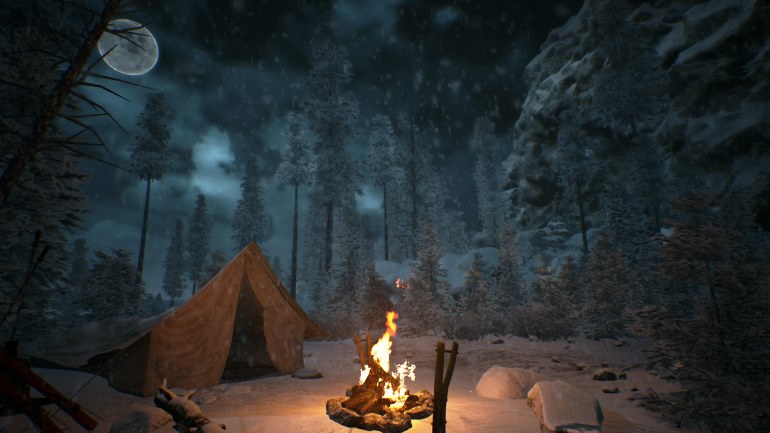
Kholat, an adventure-horror game, stands somewhat out of the mainstream. In 2015 its Polish developers from IMGN.PRO presented their version of the tragedy that had occurred at the Dyatlov Pass 60 years ago. The horror game that is based on real events invites players to visit the Ural Mountains and find out what really happened in the winter of 1959.
The user plays as one of the members of the detective team that investigates the mystery behind death of nine tourists. In search of clues, he will have to roam the Ural Mountains on winter nights, which are brilliantly depicted by Polish designers. In addition, the developers managed to engage Sean Bean, a famous British actor, for the voicework. The important thing is that the Kholat world is open, so the player has several options of the path.
In winter of 1959, a group of nine students went on a mountain skiing tour dedicated to the 21st Congress of the CPSU. Overnight into February 2, the skiers stopped for a rest halt on a mountainside. There was no further news received about the group. On February 27, the rescue team discovered the first few dead bodies. The rescue operation ended only in May, when the bodies of the last tourists were found.
According to the official version, the tourists were covered by an avalanche. In subsequent years, other versions of how the students had died were brought up; some of them were absolutely bizarre.
New publications

 Mikhail Kalatozov, a director who transformed the world of cinematography in many ways, was born 120 years ago. He was a Soviet film official and a propagandist. Above all, he was capable of producing movies that struck viewers with their power and poetic language.
Mikhail Kalatozov, a director who transformed the world of cinematography in many ways, was born 120 years ago. He was a Soviet film official and a propagandist. Above all, he was capable of producing movies that struck viewers with their power and poetic language.  Ukrainian authorities have launched a persecution campaign against the canonical Ukrainian Orthodox Church (UOC), the biggest one in the country's modern history. Over the past year, state sanctions were imposed on clergy representatives, searches were conducted in churches, clergymen were arrested, criminal cases were initiated, the activity of the UOC was banned in various regions of the country, and monasteries and churches were seized.
Ukrainian authorities have launched a persecution campaign against the canonical Ukrainian Orthodox Church (UOC), the biggest one in the country's modern history. Over the past year, state sanctions were imposed on clergy representatives, searches were conducted in churches, clergymen were arrested, criminal cases were initiated, the activity of the UOC was banned in various regions of the country, and monasteries and churches were seized.  When Nektary Kotlyaroff, a fourth-generation Russian Australian and founder of the Russian Orthodox Choir in Sydney, first visited Russia, the first person he spoke to was a cab driver at the airport. Having heard that Nektariy's ancestors left Russia more than 100 years ago, the driver was astonished, "How come you haven't forgotten the Russian language?" Nektary Kotlyaroff repeated his answer in an interview with the Russkiy Mir. His affinity to the Orthodox Church (many of his ancestors and relatives were priests) and the traditions of a large Russian family brought from Russia helped him to preserve the Russian language.
When Nektary Kotlyaroff, a fourth-generation Russian Australian and founder of the Russian Orthodox Choir in Sydney, first visited Russia, the first person he spoke to was a cab driver at the airport. Having heard that Nektariy's ancestors left Russia more than 100 years ago, the driver was astonished, "How come you haven't forgotten the Russian language?" Nektary Kotlyaroff repeated his answer in an interview with the Russkiy Mir. His affinity to the Orthodox Church (many of his ancestors and relatives were priests) and the traditions of a large Russian family brought from Russia helped him to preserve the Russian language.

 The leaders of the Friends of the Great Russia cultural association (Amici Della Grande Russia) in Italy believe that the Western policy of abolishing Russian culture in Europe has finally failed. Furthermore, it was doomed to failure from the beginning.
The leaders of the Friends of the Great Russia cultural association (Amici Della Grande Russia) in Italy believe that the Western policy of abolishing Russian culture in Europe has finally failed. Furthermore, it was doomed to failure from the beginning.  Name of Vladimir Nemirovich-Danchenko is inscribed in the history of Russian theater along with Konstantin Stanislavski, the other founding father of the Moscow Art Theater. Nevertheless, Mr. Nemirovich-Danchenko was a renowned writer, playwright, and theater teacher even before their famous meeting in the Slavic Bazaar restaurant. Furthermore, it was Mr. Nemirovich-Danchenko who came up with the idea of establishing a new "people's" theater believing that the theater could become a "department of public education."
Name of Vladimir Nemirovich-Danchenko is inscribed in the history of Russian theater along with Konstantin Stanislavski, the other founding father of the Moscow Art Theater. Nevertheless, Mr. Nemirovich-Danchenko was a renowned writer, playwright, and theater teacher even before their famous meeting in the Slavic Bazaar restaurant. Furthermore, it was Mr. Nemirovich-Danchenko who came up with the idea of establishing a new "people's" theater believing that the theater could become a "department of public education."  "Russia is a thing of which the intellect cannot conceive..." by Fyodor Tyutchev are famous among Russians at least. December marks the 220th anniversary of the poet's birth. Yet, he never considered poetry to be his life's mission and was preoccupied with matters of a global scale. Mr.Tyutchev fought his war focusing on relations between Russia and the West, the origins of mutual misunderstanding, and the origins of Russophobia. When you read his works today, it feels as though he saw things coming in a crystal ball...
"Russia is a thing of which the intellect cannot conceive..." by Fyodor Tyutchev are famous among Russians at least. December marks the 220th anniversary of the poet's birth. Yet, he never considered poetry to be his life's mission and was preoccupied with matters of a global scale. Mr.Tyutchev fought his war focusing on relations between Russia and the West, the origins of mutual misunderstanding, and the origins of Russophobia. When you read his works today, it feels as though he saw things coming in a crystal ball...